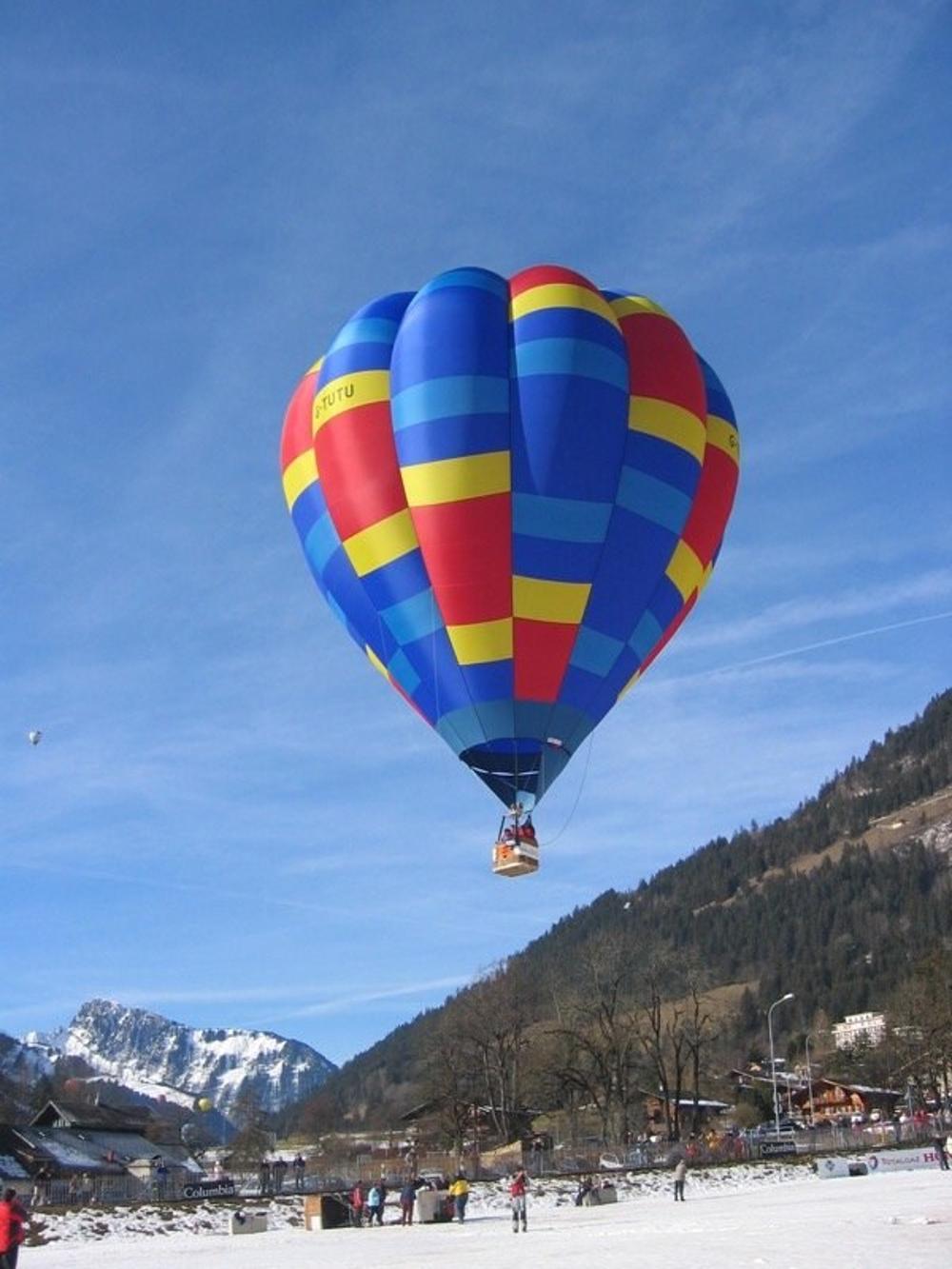Hot air balloons rise into the air using a force that is known as buoyancy. The enormous canopy of the balloon, referred to as the envelope, is filled with air that has fewer particles, and is, therefore, not as dense as the air surrounding the balloon. Since less dense air tends to rise above thicker air, this causes the balloon to lift. At the same temperature, air that is lower in density, with fewer air particles, would be expected to have a lower pressure than this high-density air.
If this was the case inside a hot air balloon, the higher pressure of the surrounding air pushing in would make the envelope collapse. However, because the air inside the envelope is heated, even though the particles are fewer, they move around more quickly than those in the cooler air outside. This causes the air inside the envelope to have a higher pressure than it would otherwise and keeps the balloon inflated.
Lifting passengers off the ground takes a lot of hot air
The volume of hot air needed to raise only seven grams in weight is round 28 litres. That is why hot air balloons are so vast. The envelope must hold thousands of litres of hot air in order to lift a basket loaded with passengers into the sky. The air inside the balloon is heated using a burner sited below an opening at the bottom of the envelope. One fuel that is often used is liquid propane.
A pilot light initially heats up the supply pipe until it is so hot that the liquid propane becomes gaseous as it passes through. The propane gas then burns as a jet of flame beneath the envelope and the pilot controls the burner, firing it up as required in order to heat the air inside the envelope and raise the balloon.
The maximum height reached by a balloon is limited by the fact that air becomes thinner with altitude. On attaining a certain height, the air outside the balloon's envelope will be so thin that it is not much denser than the air inside, and the balloon will not rise much more. If the pilot wishes to descend, a valve at the top of the envelope can be opened to release hot air. As the air inside the balloon cools it becomes denser. Ascending slows and, if more hot air is released, descending takes place.
Balloon pilots make use of the wind when flying
Balloons are not able to change direction independently of the wind when flying and pilots rely on the fact that, at different levels of altitude, wind currents travel in different directions. In order to change direction, the pilot needs to lift or lower the balloon to catch a different wind current. As well as travelling in different directions, wind currents also flow at varying speeds. Higher speeds exist at higher levels above the ground. This means that pilots can fly balloons quicker or slower depending on the altitude at which they travel. As piloting a balloon relies on natural forces, it is not possible to be completely accurate. Ground crews are always ready to meet the balloon when and where it lands.




